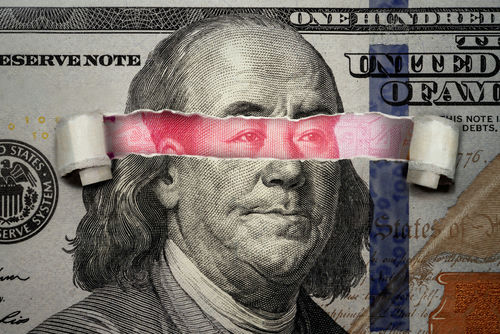A $20 bill feels like a simple, everyday thing. Right now, it might get you a couple of coffees, a fast-food meal, or a few items for dinner. But that same piece of paper is also a time machine, and a quick trip to the past reveals just how radically its value has changed.
A Shopping Spree in the 1950s
Let’s set our first stop in the 1950s, an era well within living memory for many. With a $20 bill, you could treat a family to a nice holiday meal and still have plenty of change left over. It could buy several new clothing items or a full week’s worth of groceries for many households.
But here is the most stunning example: for around $20, you could have bought a dairy cow. That wasn’t just a simple purchase; it was a significant, productive asset that could provide fresh milk for a family. It’s a scale of purchasing power that is almost impossible to imagine today.
The Roaring Twenties and a Full Tank
Go back just a few decades more to the 1920s, and that $20 bill still held incredible power. This was an era of new consumer culture, and $20 let you participate in style. A man could walk into a department store and buy a brand-new, fashionable suit for under $20.
If you were one of the people embracing the new automotive age, $20 was a huge amount. It could fill up the gas tank of a new car—not just once, but as many as ten times over. It represented a level of freedom and mobility that was revolutionary for its time.
When $20 Could Buy the Farm
Let’s go even further back, to the early days of the United States. In the 1800s, a $20 bill had the purchasing power of over $500 in today’s money. It was a sum that could significantly alter a person’s life.
In the colonial era, the equivalent of $20 could do more than just buy a cow; it could buy a significant plot of land. This wasn’t a small garden plot; this was the foundational asset that could build a family’s entire future. That $20 represented the chance to own property, build a home, and create a livelihood.
The Not-So-Distant Past
You don’t even have to travel back a century to see a dramatic difference. Just think back to the year 2000. That $20 bill in your pocket had nearly double the purchasing power it has today.
It was the difference between a full cart of groceries and just a small basket. It could easily cover a casual dinner out, a new music CD with a magazine, or two tickets to a movie with snacks. It’s a slow, quiet change that has happened right in front of us.
So, What Happened to Our $20?
Why does a $20 bill buy less and less over time? The simple, one-word answer is inflation. Inflation is the slow, steady increase in the price of almost everything, from bread and milk to cars and houses.
It’s not that the $20 bill itself physically changed; it’s that the value of each dollar has been stretched thinner over the decades. This is a normal, expected part of how modern economies work. But seeing it through the lens of a single $20 bill makes the abstract concept of inflation feel sudden and very personal.
A Story in Your Pocket
The $20 bill in your wallet is more than just money. It’s a piece of living history. It tells a story of economic booms, global wars, and the quiet, persistent march of time.
While it may not buy a dairy cow or a plot of land anymore, it serves as a powerful reminder. It shows how much our world and our economy have changed. And it teaches us that the value of things—from a plot of land to a cup of coffee—is never really set in stone.

